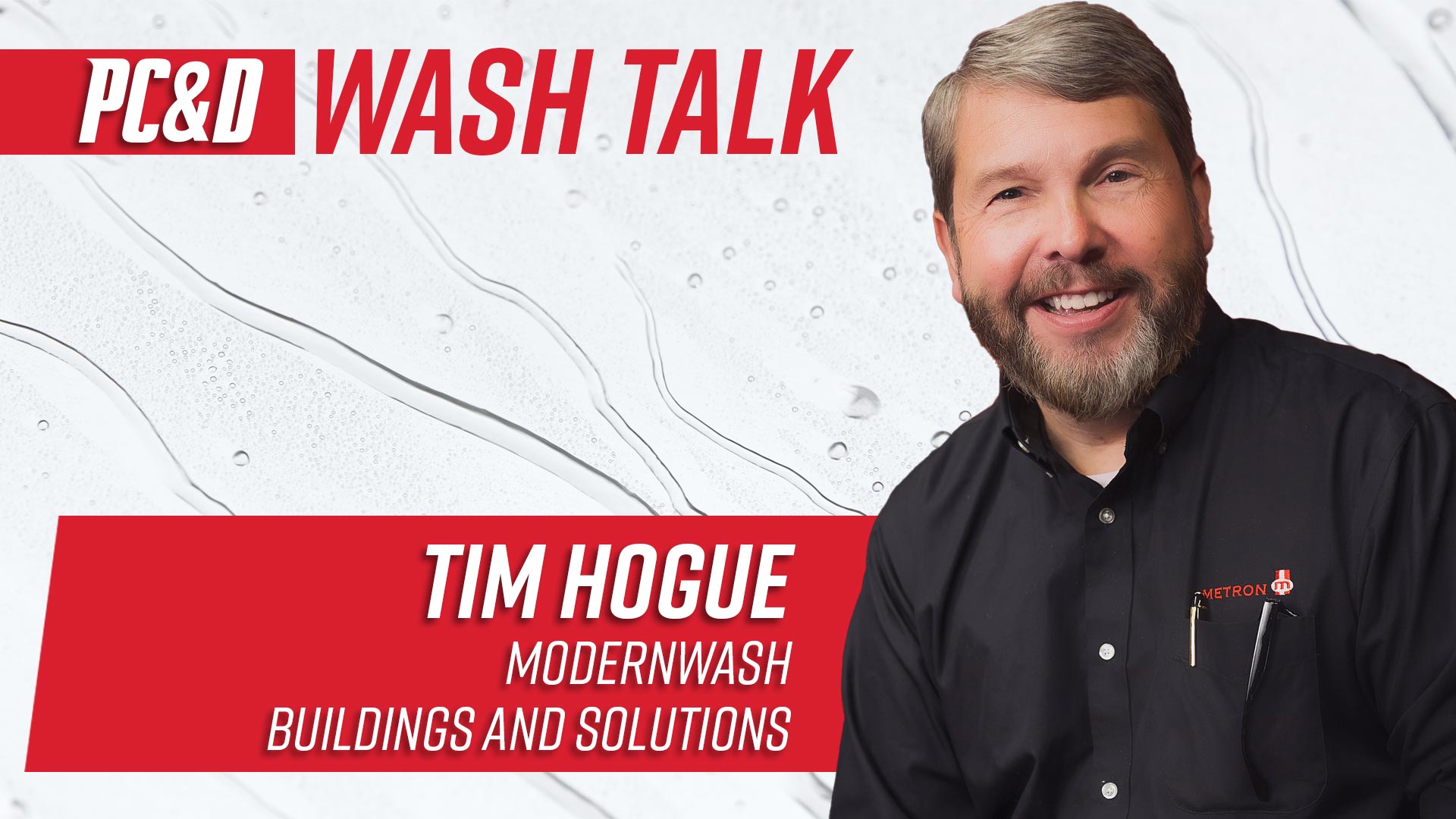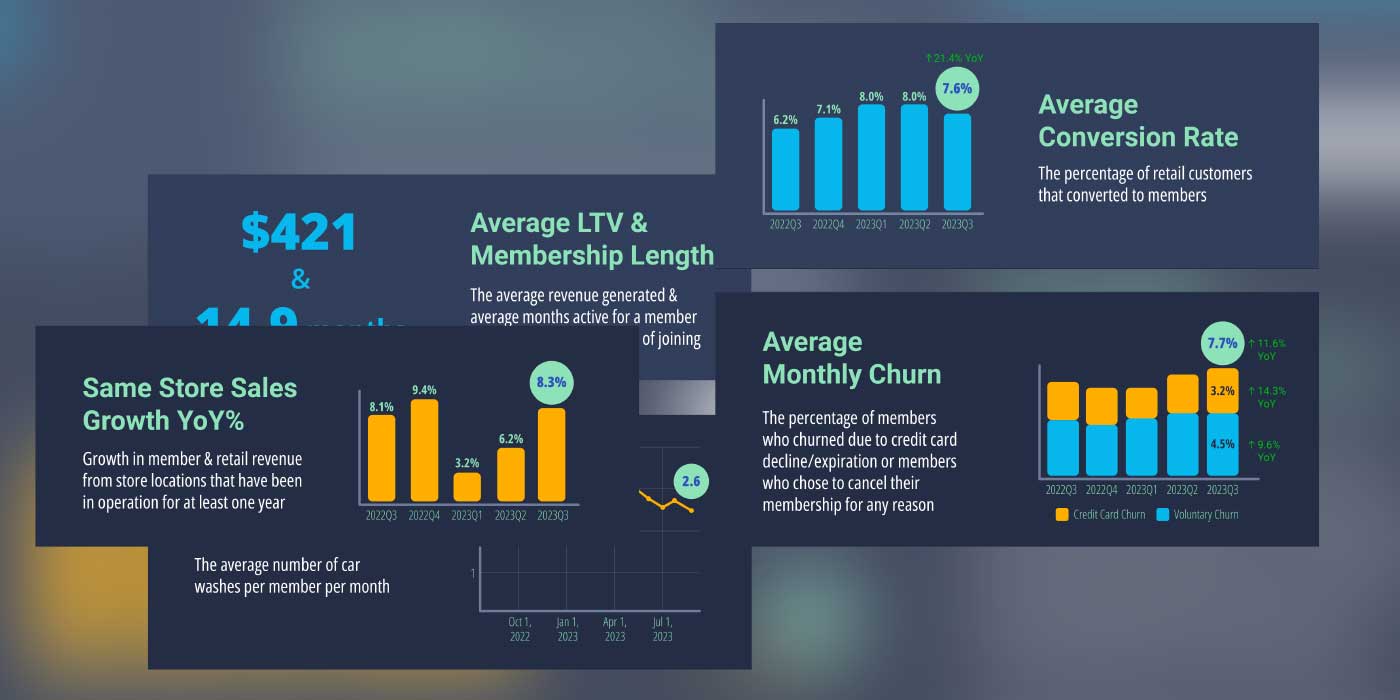By most accounts, car counts across the country at many professional carwashes are up or remain high. In some cases, operators have reported record numbers in recent years. There are several factors that can be attributed to the growth in the carwash industry. For example, fewer people are washing their cars at home today compared to 30 years ago. Also, the U.S. economy has improved, and unemployment rates are considered low, leading to more discretionary consumer spending. In addition, a newer carwash model — express exterior — is offering convenience to customers and has contributed in pushing innovation efforts forward at many of the equipment and technology manufacturers in this industry in order to keep pace.
Combined with the rise and popularity of loyalty club programs, these are just some of the contributing factors to the widespread increased volume operators have seen in recent years.
However, while volume on the site is a good sign for profits, if your carwash is not properly set up to handle the load, business will soon go elsewhere. In order to sustain increased car counts, experts have some tips and advice. We reached out to a few industry insiders to find out how operators can effectively process more cars and maximize the potential of their sites.
What is high volume?
According to our 2019 Professional Carwashing Industry Report, when analyzing annual car counts from 2016 to 2017, 60% of survey respondents, comprised of operators across all wash formats, reported that their numbers “increased” or “increased significantly.”
Sustained car count increases typically do not happen overnight at a carwash — although we are sure that most owners would not mind if that were to happen at their washes. A new site will need some time to build a reputation and loyal customer base, especially if it is hoping to drive significant revenue through loyalty membership.
But, what is considered “high volume” at a carwash today?
“In many markets, I would consider 100,000 (annual car count) a high-volume conveyor site,” educates Mike Jorgensen, sales manager at XpresWash. “For an in-bay automatic (IBA) location, I would suggest 20,000 washes annually would be considered a high-volume IBA site.”
According to our research for an express exterior conveyor site, a car count of 120,000 or more per year would be considered high volume.
As reported in this publication and on Carwash.com, a few conveyor carwashes in the U.S. have even reported as high as 200,000-plus annual car counts. But, since every area of the country is different and no two carwashes are alike, achieving such high car counts might be out of some operators’ control. Studying the customer trends, area demographics, traffic counts and capture rate will all play contributing factors in the level of volume you receive on your site.
Brian Bath, who is the vice president of sales at Innovative Control Systems (ICS) with over three decades’ worth of experience in the professional carwashing industry, helps tie dollars to volume for the self-serve wash segment of our industry.
“For a self-serve carwash with over four bays, $2,500 per bay per month would be considered high volume; for less than four bays, high volume is in the $3,000 to $4,000 range per bay per month,” explains Bath.
The loyalty program impact
If you are considering a loyalty or membership program, experts in this industry have three words of advice: just do it.
“Unlimited programs have really ‘changed the game’ in regards to car counts,” says Kevin McLoughlin, vice president of strategic business at Washify Services LLC. “Fortunately, there have been some great innovations in regards to equipment and chemistry that have made it easier than it was previously to deliver consistent wash quality.”
While pay-per-visit customers should not be minimized, the growth of subscription-based programs can no longer be ignored. According to McLoughlin, some of the carwashes he works with have upwards of 70% of their volume attributed to unlimited members.
“Unlimited programs have increased volumes all across the board. The ‘A’ locations are doing volumes this industry has never seen. Also, the marginal sites that have had limited success are experiencing significant increases in volume and revenue. Any carwash that is not at capacity and wants to wash more cars and make more money should look into an unlimited program,” advises McLoughlin.
Other contributing factors
While we touched on some of the reasons many carwashes across the U.S. are experiencing higher than normal car counts, there are several other trends and factors at play that are helping to drive increased volume at professional carwashes.
Bath highlights three of the leading factors.
- Customers want a great value at a reasonable price point. They demand consistent, repeatable wash quality.
- Club memberships drive volume. It is all about value. Customers will enroll and remain in the program if they feel they are receiving what they paid for.
- Marketing via social media, mailers, mobile apps, etc., plays an important role.
But, warns Bath, an operator should not try to overcome inefficient site design and setup to accommodate volume, particularly in conveyor formats. “An operator should never run higher conveyor speeds and sacrifice quality,” cautions Bath, “but, often they do to push the volume through. However, without high wash quality, you will most likely never achieve high volume on a long-term basis.”
In addition to the trends noted, carwash equipment advancements have also made it possible to process more cars on-site. In fact, Jorgensen calls these modern innovations a “game changer” for cleaning cars.
“With so many geographic areas underserved, the wash business has really boomed the last five years or so, allowing equipment manufacturers the opportunity to reinvest and develop new technologies while delivering new platforms to help operators deliver both value and a clean car … quicker,” remarks Jorgensen.
Handling increased car counts
A long line can drive away business, and increased traffic on your site is not worth much if cars are leaving before a transaction is processed. In today’s era of speed and convenience, most customers will not wait in a line for very long. Five minutes in line may seem like an hour to some customers. As frustration mounts, that customer will either go to the competition or worse — choose another method: driveway washing.
Some of the leading carwashes that we have featured in this publication and visited over the years handle high volume in several ways. If your carwash qualifies as a high-volume site based on the aforementioned metrics, it should feature spacious queuing and stacking areas, wide turning radiuses, more lanes or members-only lanes, advanced automation to reduce prepping and finishing times, large vacuum areas and easy ingress/egress. During site design, you should look to maximize every inch of the lot.
Bottlenecks and poor site design aside, technology can also help overcome a clogged site that has high volume. Updated payment options, app-based solutions, RFID tags and license plate reader (LPR) technology as well as clear, illuminated signage and employee assistance can help process more cars.
Setting the wash up for success from the beginning is as important as actually processing the volume in real-time and managing a successful loyalty program. Bath calls the combination of auto pay stations with a gated system the “winning factor” at high-volume sites. Reflecting back, he explains how much the industry has changed over the past two decades.
“[Advanced] auto pay stations with a gated system … coupled with free vacuums has changed everything in the industry, where you have sites washing well over 150,000 cars per year,” says Bath.
Prior to the express model, he continues, it was more common for his customers to wash 40,000 to 60,000 cars per year. “Now, most of those that have remodeled sites and gone express with free vacuums and even added a towel exchange program are washing over 150,000 cars, not to mention reducing their labor cost by 75% — and they’re profiting far more,” Bath adds.
According to Bath, the standard metric is three to five minutes from street entrance to street return as a common occurrence with today’s express wash processes. With newer controller technologies, he adds, cars can be loaded faster with digital signage and instructional information.
Some modern carwashes have been built with high volume in mind. As profiled in this magazine, sites are leveraging the speed of such new developments as belt conveyors and dual tunnels to handle high car counts. Also, longer tunnels can process more cars.
On the IBA side, Jorgensen has seen several improvements that have helped cut wash times. “Touch-free washing quality has come a long way in large part [due] to better cleaning chemistry and shorter wash [times]. Depending on the offerings of the IBA machines, a touch-free wash can be done in around three minutes, while a [basic] friction wash in around four minutes in many cases,” he explains.
Leading equipment manufacturers that specialize in IBA technology have advanced their offerings to fit an IBA express wash. According to D&S Car Wash Equipment Co.’s Marketing Manager Ken Underhill, an IBA-based hybrid model can increase throughput capacity by 50% over a standard IBA.
“Augmenting a stand-alone IBA with components and processes, such as post-wash arches and tire shiner, in an integrated system allows for dual vehicle throughput versus ‘one-car-at-a-time’ capacity,” continues Underhill. “This lower-cost alternative to an express tunnel can more than handle that 20,000 wash/year threshold of a high-volume IBA location.”
Ways to turn up the volume
Assuming your research and planning are correct, but you’re still not achieving the car counts you expected, there may be several leading reasons why. First and foremost is wash quality. As mentioned, some operators look to overachieve or cut corners to maximize volume, and often it’s at the expense of wash quality. If you don’t have quality results, you cannot expect customers to come back.
Outside of wash results, how are your community outreach and marketing efforts performing? At Bath’s carwash, he finds success in running several direct mail campaigns. “We helped a new, struggling location go from 200 cars per day to over 400 with just one direct mailing to 40,000 homes for the cost of about $12,000. … It was well worth the cost. A year later, volume continues to grow, so sometimes you just have to get the word out,” he adds.
Driving volume and increasing ticket averages starts with a positive, plugged-in operator and manager. Also, the owner’s presence on-site will help increase morale and enhance the customer experience, leading to more site traffic.














